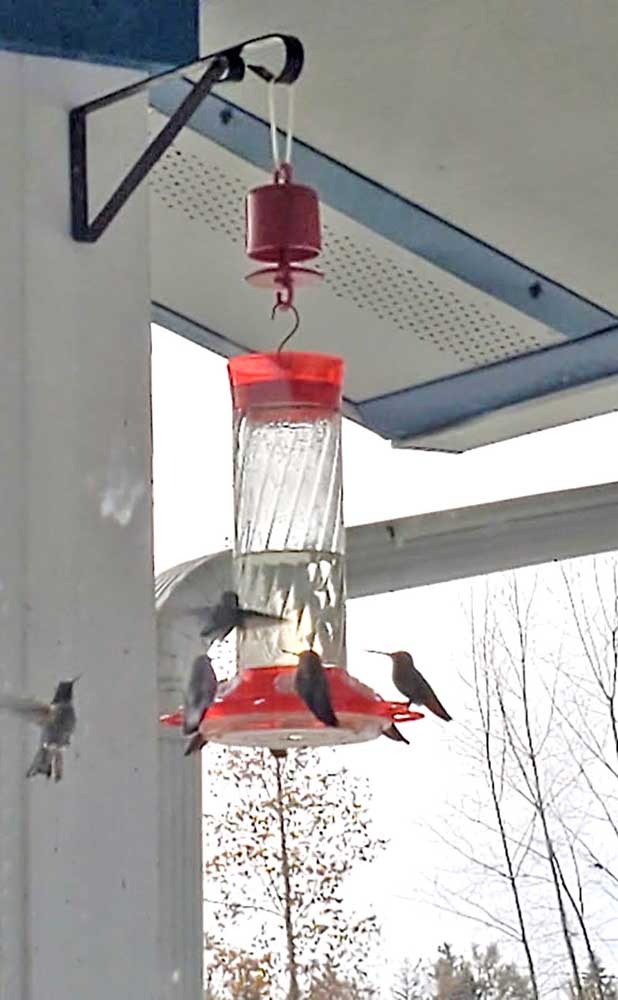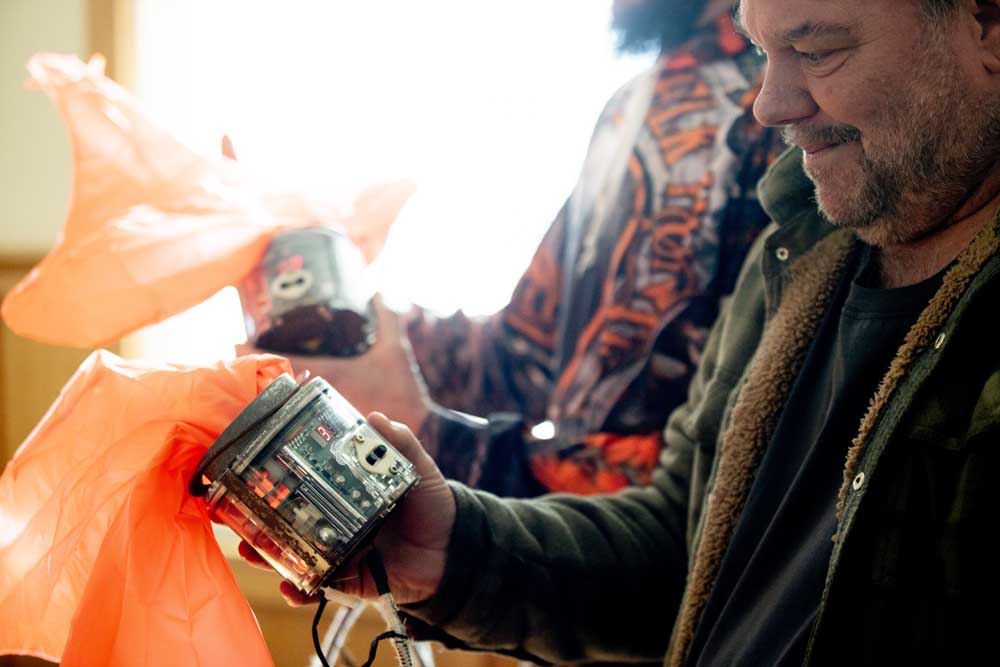Birding: Glittering jewels light up the darkness of winter
Published 10:55 am Wednesday, December 9, 2020

- Six Anna’s are feeding at the same time with others hovering in the wings waiting their turn for a sip of tasty nectar.
First, a “big thank you” to the readers of this column who have been sending me photos, observations and/or comments on the Long Beach Peninsula birds. Anna’s hummingbirds have been on many peoples’ minds these past few weeks. It seems that hummingbird feeders are being inundated by many Anna’s — not just the usual one or two.
Trending
My friend Karin added to her feeder collection by ramping it up to three instead of just one. It seems she was spending much of the day making nectar for the Anna’s in order to keep up with the demand. When the second and third feeder went up, she wrote to say that they were just as busy as the first one. That is a lot of hummers feeding at one time. A flock of hummingbirds is known as a bouquet, a glittering, a hover, a shimmer or a tune, according to the the Cornell Laboratory.
My friend Shelley had a similar experience. There were at least six Anna’s feeding at one time with others hovering in the wings waiting their turn for a sip of tasty nectar. Another friend, Marcia, decorated the tree in her backyard for the Anna’s. The colorful red decorations served as an attraction and brought in at least a pair to her feeder full of the sweet sugar-rich liquid.
Hummingbirds have excellent color vision so feeders with bright colors such as red in their structure are best. It is not wise to color the nectar as dye will harm the birds. Scientists indicate that a hummingbird needs to consume up to 50 percent of its body weight in insects and nectar a day to survive. It drinks nectar using its tongue which it rapidly moves in and out of the nectar. Nectar is easy to make. Combine one part sugar with four parts water, bring to a boil, cool and then serve.
Trending
In cold weather, hummingbird bodies enter into an “energy-conservation mode called torpor,” according to Oregon State ecologist Adam Hadley. Birds that stay north for the winter experience a nightly “mini-hibernation,” in which their 107-degree body temperatures can plummet to 48 degrees. When the weather warms the Anna’s can become active again in just a few minutes, the Cornell Lab says.
The question that comes to mind is, why are so many Anna’s hummingbirds frequenting our feeders at this time? Perhaps it is due to the fact that insects are scarcest in our late fall and winter. Perhaps it is due to the fact that the feeders some of the birds used to frequent have disappeared or are no longer being filled with nectar, so the hummers moved on to our feeders! It is well known that hummingbirds have amazing memories.
They remember the location of feeders and the flowers in their territories, but if these food sources disappear, they quickly move on to another energy source.
Anna’s hummingbirds are mostly green and gray, without any rufous or orange marks on the body. The male’s head and throat are covered in iridescent reddish-pink feathers that can look dull brown or gray without direct sunlight. This irides-cent throat patch is called a gorget. “The Anna’s gorget extends over its head, making it more of a balaclava than a bib. Oddly, female Anna’s have a tiny red gorget, where females of most species have none,” according to the Cornell Lab.
Hummingbirds are like little glittering jewels. Simply seeing them delivers a boost to my soul.
Whenever I see the Anna’s dancing through the air to reach my feeders for a sip of nectar, I am reminded that beauty is right in front of me. It can be right in front of you too. All you have to do is look!









